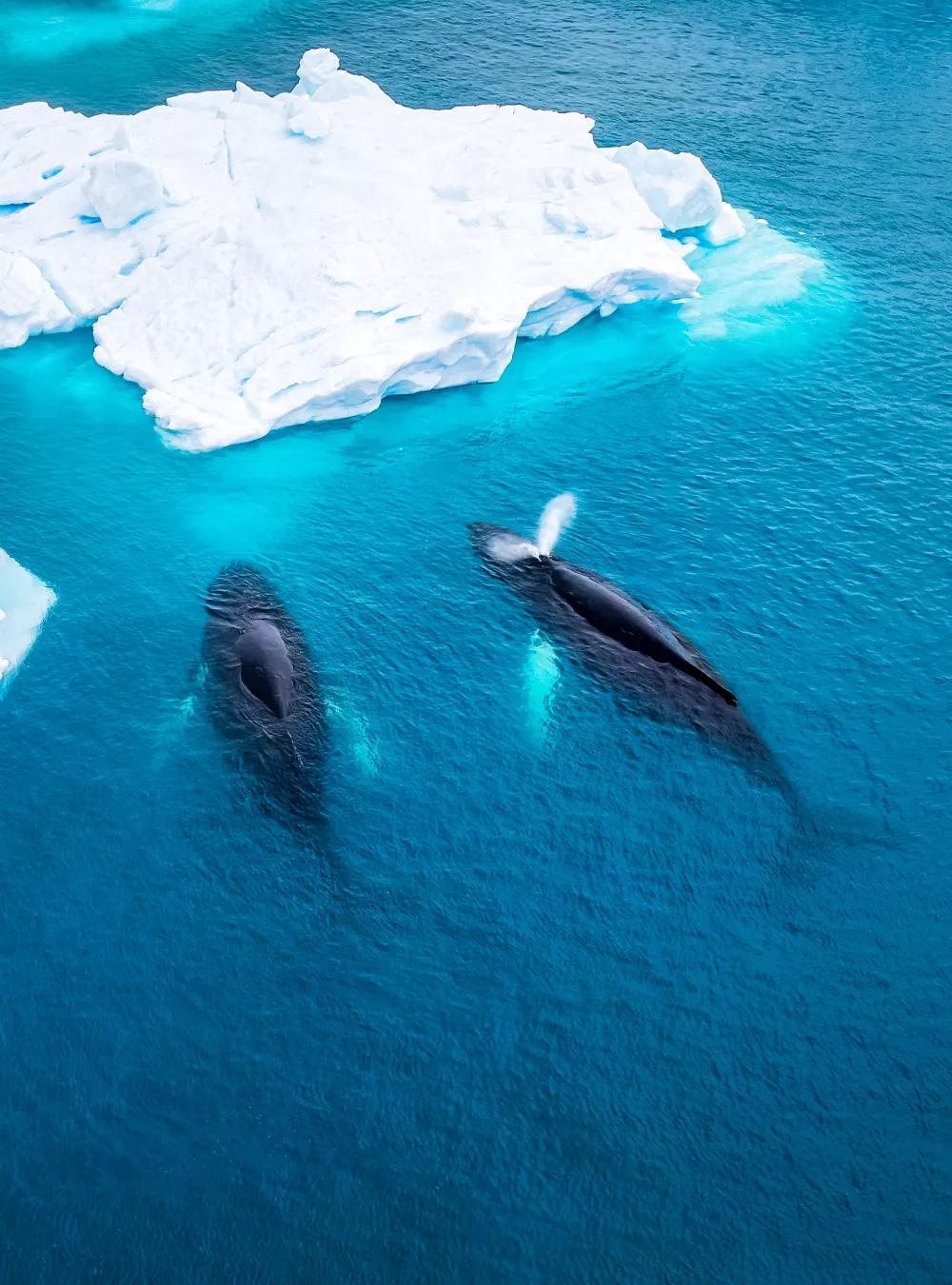As shrinking Arctic glaciers signal a growing climate crisis, MITRE researchers set out to understand what lies within the thaw. Finding no identifiable way to detect disease-causing organisms, our experts demonstrated the potential benefits of a pathogen surveillance system.

As the World Warms: Fighting the Spread of Disease from the Arctic
Searching for "cold hard" proof of global warming? Look no further than the melting ice of the Arctic. Warming twice as fast as the rest of the planet, the region is recognized as a frontline for climate change. With potential global implications, the thaw begs the question: Do we know what pathogens lie in wait underground?
Imagine the next pandemic developing from harmful microbes present within permafrost, part of the long-frozen Arctic terrain. This scenario may sound like science fiction but is an all-too-real threat.
In 2016, for example, 13 people in Siberia became ill from anthrax spores linked to the thawed carcass of a reindeer that died 75 years prior. Surveillance systems do exist to monitor such incidents as disease presents in people. But no system exists to detect pathogens in the environment before diseases strike.
"Essentially, we know when people get sick, but we don’t always know the locations where people were exposed," says MITRE epidemiologist Alex Wu. He led a MITRE research team in taking the first step toward developing a more proactive approach to battling diseases that could emerge from permafrost.
Our experts reviewed the state of the science of current efforts to surveil pathogens in the Arctic. They identified a significant gap in understanding where potentially dangerous microorganisms may reside in permafrost. And they demonstrated how pathogens could be mapped to alert public health officials to their presence before people fall ill.
"We need an integrated system that combines the information from permafrost thaw, climate prediction models, human activity, soil microbial data, and locations of human and animal remains," Wu explains. "This will be vital to the next phase of fighting diseases at their origin to prevent their spread."
An integrated system [to detect pathogens in permafrost] will be vital to the next phase of fighting diseases at their origin to prevent their spread.
Infectious Disease—an International Concern
The icy Arctic has long been home to myriad pathogens. While frozen, these pose no risk to human health. But increasing human engagement in the region means as temperatures increase, so does people’s risk of harmful exposure. From indigenous populations and oil pipeline staff to U.S. military personnel, those living and working in this remote territory may become vulnerable.
Wu, formerly an epidemic intelligence service officer for the U.S. Centers for Disease Control and Prevention (CDC), has long held a fascination with the Arctic area. In his youth, he spent many summers visiting Alaska with family friends—and became fascinated with its beauty.
When he came to MITRE in 2021 and learned of our independent R&D program, it prompted a proposal to explore the question: "How can we prepare for another pandemic-type pathogen that could blindside us from other regions, such as the far North?"
To answer this question, our research team began by surveying what exists. They searched open sources and scanned public health websites from the United States, Canada, Finland, Greenland, Iceland, Norway, Russia, and Sweden. Researchers also consulted with external experts on climate change, microbiology, and infectious disease from federal agencies, universities, national laboratories, non-government organizations, and tribal epidemiology centers. The effort revealed there is no system in place to detect microbes released from permafrost.
What is in place? Disease surveillance systems operated by all Arctic countries, which rely on human samples. In the U.S., the CDC operates a system to track disease nationally. The U.S. Geological Survey and U.S. Department of Energy also do some collaborative research examining the Arctic microbiome. The international community uses the International Circumpolar Surveillance (ICS) system to monitor infectious disease in the Arctic.
ICS leverages long-standing circumpolar relationships and disease surveillance systems of participating nations. These partners conduct environmental sampling (i.e., of pollutants) as well. But without a coordinated approach to detect pathogens from thawing permafrost, the next pandemic could once again catch us off guard.
Heading Pathogens Off at the Pass
With that gap identified, our experts set out to demonstrate a more forward-looking strategy. They first identified relevant data (e.g., temperature, soil sample microbes, location of remains). Next, they applied microbiology and epidemiology to create a pilot pathogen-exposure map for a small section of Alaska. The map illustrates what could be done to estimate risk to humans, given an active surveillance system and the right data.
MITRE’s Sutyajeet Soneja, one of the project’s researchers, adds that collaboration with the local population is key. "We need to work with groups on the ground like the native tribes, so they can understand what's going on in their own backyard and be protected along with government and industry and visitors."
The research draws on our experience as operator of the federally funded R&D center for health. It also builds on MITRE’s work on Arctic security and stability, such as generating power for the U.S. Defense Department’s operations in the region. And the effort raises additional questions climate scientists could explore: What if permafrost thaw releases ancient pathogens that expose fish and other wildlife? How will this impact the aquaculture and the natural ecosystem?
"We know we can’t stop climate change, because it’s already happening," Wu says. “But we can work together to better understand the risks."
Join our community of innovators, learners, knowledge-sharers, and risk takers. View our Job Openings and Student Programs. Subscribe to our MITRE 360 Newsletter.